A Critical Reflection on Hyperstitional Occultism in general and the trope of the Tree of Life and the Numogram in specific, resulting from multiple attempts of working with these concepts. I know this article might rub practitioners of Golden Dawn style magick, Thelemites, Chaos Magicians and Neolemurian time sorcerers the wrong way, but it's just like my opinion, man 1.
v.1.2 - July 18, 2025
I think it's for us to make sense of trees, not to use arborescence as a kind of criterion of philosophical insufficiency. Nick Land2
Cutting Down the Tree
On my research journey exploring different popular Western magical currents I could not help but notice a widespread obsession with the trope of the 'Tree of Life'. It’s almost impossible to avoid. At first, I even assumed there was no way around it, since it’s so prominently featured in nearly all occult literature. While I totally understand the aesthetic lure of a schematic concept of reality, the more I delved into it the less it clicked with me. That also includes its cybergoth sibling, the Numogram.
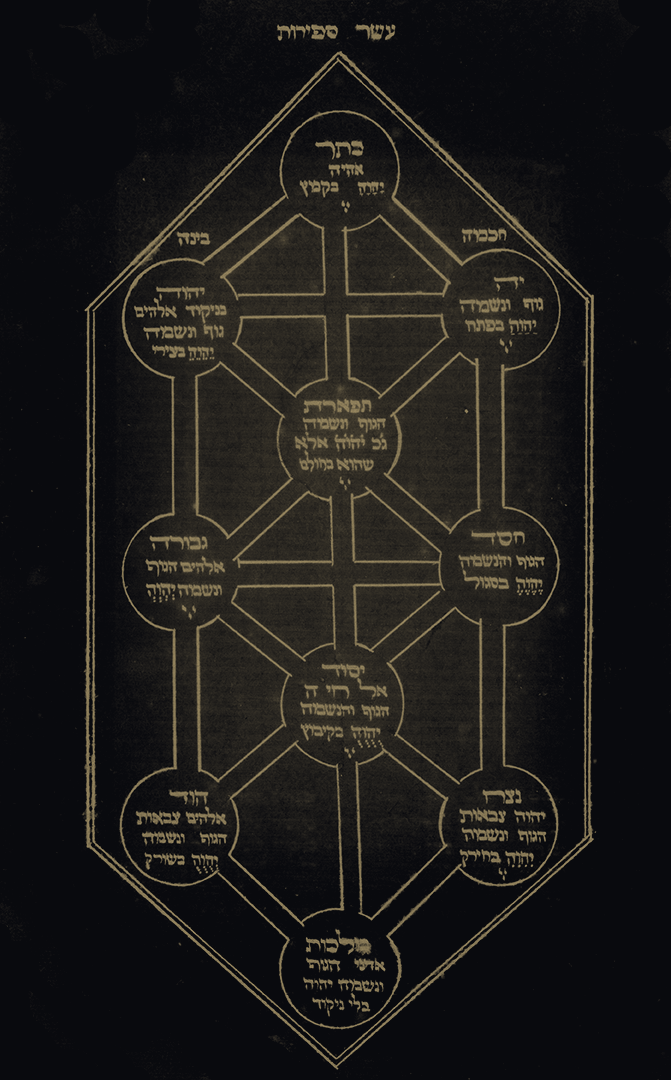
To recap, the Tree of Life is the central diagram of most prominent of schools of Jewish mysticism, the Lurianic Kabbalah. Likely influenced by earlier mystical frameworks such as The Seven Palaces 3 it is composed of ten spheres called Sephirot (סְפִירוֹת). It maps the process by which the infinite divine source, Ein Sof (אֵין סוֹף), emanates into creation. Each sephira corresponds to metaphysical principles, ethical qualities, archetypes, and aspects of the soul. The Tree serves as both a cosmological map and a contemplative tool, guiding the mystic in a lifelong process of refinement and return to the divine. It is embedded in Jewish liturgy, halachic life, and inseparable from the communal, theological, and ritual contexts in which it developed. 4 5
It's deeply fascinating but I am neither Jewish, nor do I believe that it can be fully grokked outside of its spiritual tradition.
Although the diagram reached its most recognizable form in 16th-century Lurianic Kabbalah, its basic structure was already established in earlier texts. Christian thinkers such as Giovanni Pico della Mirandola and Johannes Reuchlin were among the first to extract and reinterpret this structure outside its Jewish context 6. They appropriated the Tree of Life and reframed it through a Neoplatonic-Christian lens, using it to validate Christian theological concepts while severing it from its halachic roots. Fair enough.
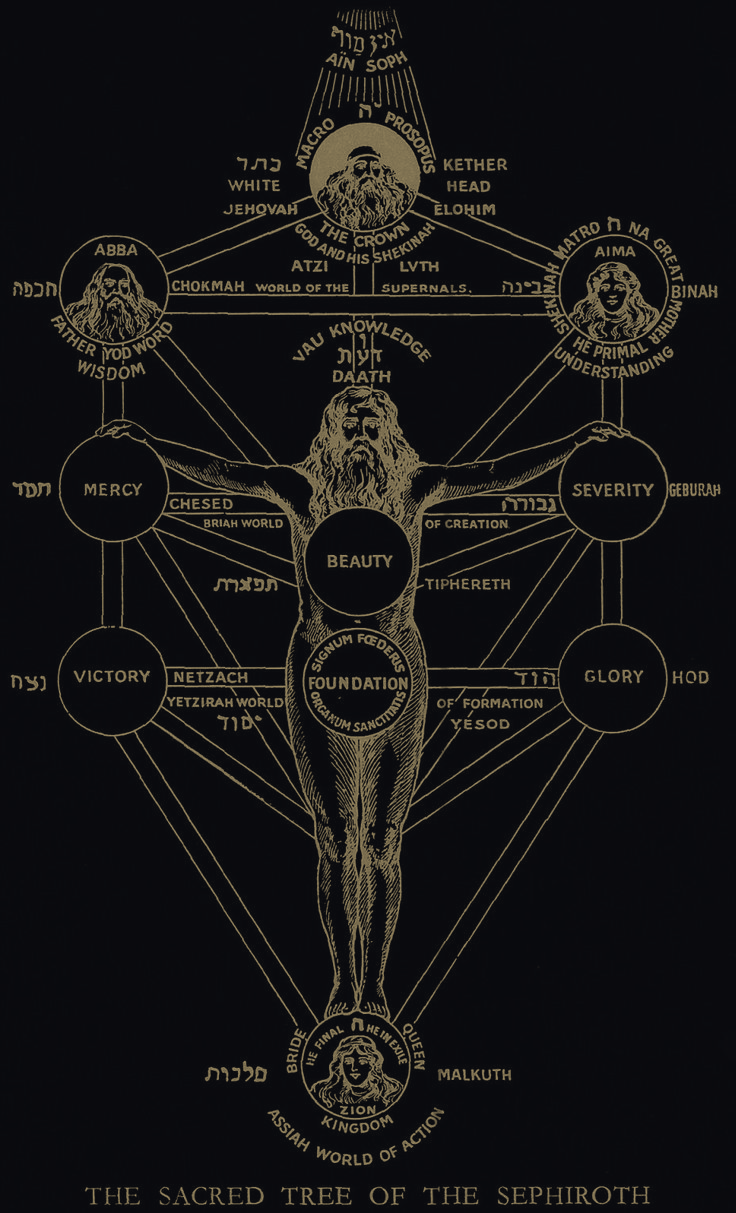
My sincere apologies in advance to anyone using Victorian lodge magick in their practice, but in my opinion the really dumbed down misappropriation of the Tree of Life kicked off in the beginning of the 20th century when the magical order of the Golden Dawn placed the Tree of Life at its core, not in connection with any of its original Jewish theological depths but as a kind of aesthetic filing cabinet onto which planets, Tarot cards, Hebrew letters, alchemical symbols, archangels, astrological elements and other endless occult correspondences got mapped 7. This reification of structure and symbolic systemization was just the beginning.
Then came Aleister Crowley ("Hold my beer!") and took the Tree of Life further, subordinated it to his own take on pseudo-Kemetic philosophy called Thelema and layered it with Vedic chakras, his own numerological obsessions, erotic metaphysics, and personal empowerment 8. The result is even more of a cringeworthy intellectual and spiritual distortion.
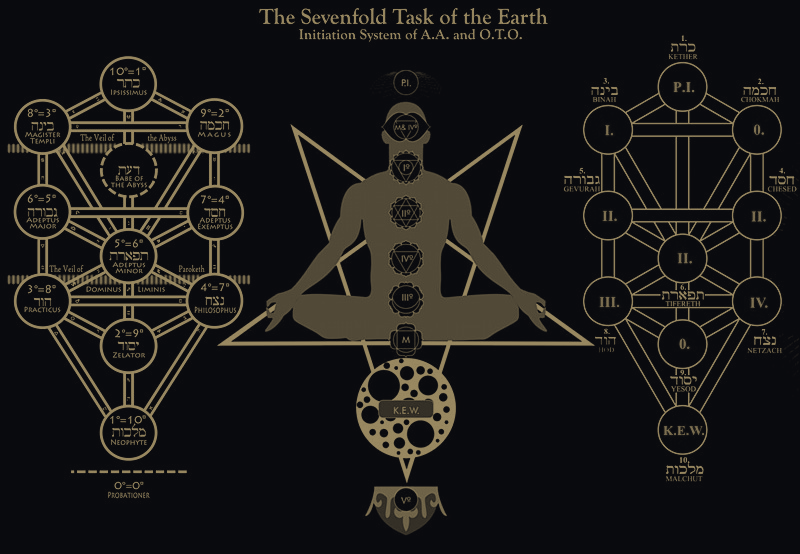
From what I gathered, Jewish Kabbalists understood the mystical path as inherently bound to communal responsibility, reverence for the divine, and a centuries-long interpretive tradition. The occult appropriations, by contrast, are individualized, instrumentalized, and divorced from authentic mystical engagement. Where the Jewish kabbalistic Zohar spoke of the soul's yearning for union with the divine through humility and worship, or "Avodah" (עֲבוֹדָה), Crowley speaks of the magician imposing their will on the cosmos.
I find all of this especially problematic in the face of the unprecedented violence and marginalization of Jewish communities during the same period by the same cultures that romanticized their mysticism.
The obsession with the Tree of Life trope didn't die with the early 20th century occult revival. Fast forward to the end of the century where it was regurgitated during the 'Chaos Magic' fad and eventually mutated into something new when the academic artist collective Cybernetic Culture Research Unit (CCRU) picked up the trope and cyber-fetishized it.
Enter the Numogram
The CCRU was an experimental collective of theorists and artists at the University of Warwick associated with figures such as Sadie Plant, Nick Land, Mark Fisher, or Reza Negarestani who explored cybernetics, philosophy, science fiction, rave culture, internet culture, and occultism. They produced an impressive body of work that blurred the boundaries between theory and fiction.
The CCRU had a lot of innovative ideas that influenced occult thinking at the time, most notably the concept of Hyperstition 9. The neologism that combines the words 'hype' and 'superstition' describes the process by which fictional or speculative ideas can influence reality by circulating through culture and belief. Unlike traditional superstitions, which are typically rooted in inherited myths or fears, hyperstitions are understood as self-fulfilling narratives.
Another key occult innovation from the CCRU was the inception of the Alphanumeric Qabbalah 10, a system of English gematria that assigns numerical values to the letters of the Latin alphabet. I make regular use of this system 1 and plan to explore it in depth in a dedicated article.
The CCRU's most iconic hyperstitional tool is the Numogram 11, a symbolic diagram built on the base-10 numerical digits and made of ten numerical zones grouped into five pairs, or syzygies, linked by their digits adding up to nine. The difference between the numbers in each pair creates a current, forming the system's primary flows 12.
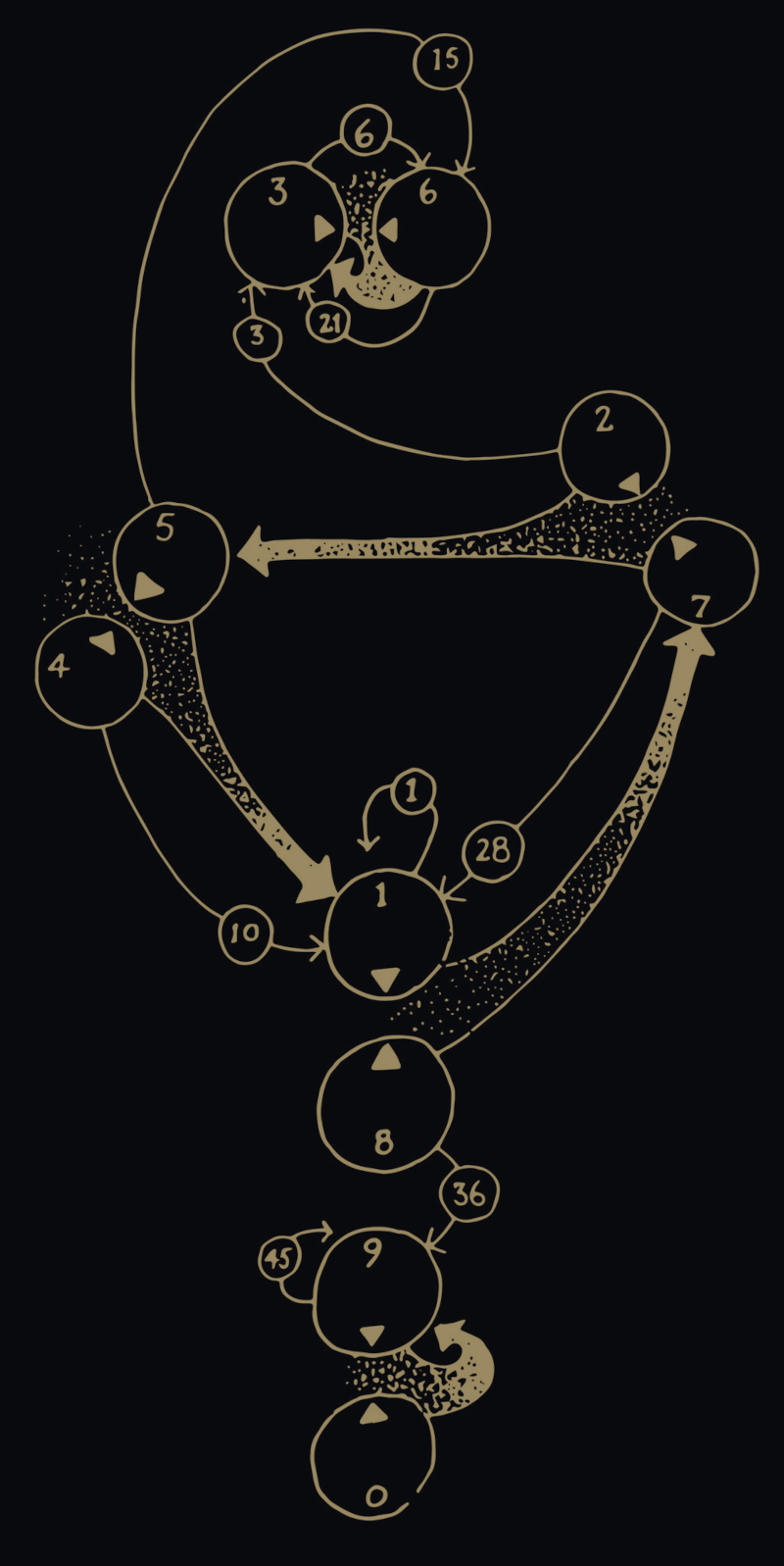
At a glance the Numogram resembles the Tree of Life in its geometry and like its Jewish predecessor proposes a universal map of forces and movements.
Part of the hyperstitional myth is an explicit critique of the original Tree of Life as a distorted, degenerated form of the Numogram, reduced to a baroque relic unworthy of serious occult inquiry. While both diagrams share structural similarities, such as ten zones, numerological methods, and symbolic mappings, the Tree is portrayed as an incoherent system upheld by tradition rather than principle. Its structure is dismissed as arbitrary, with numerical order and Hebrew letters assigned mystical weight without any internal logic 13 14.
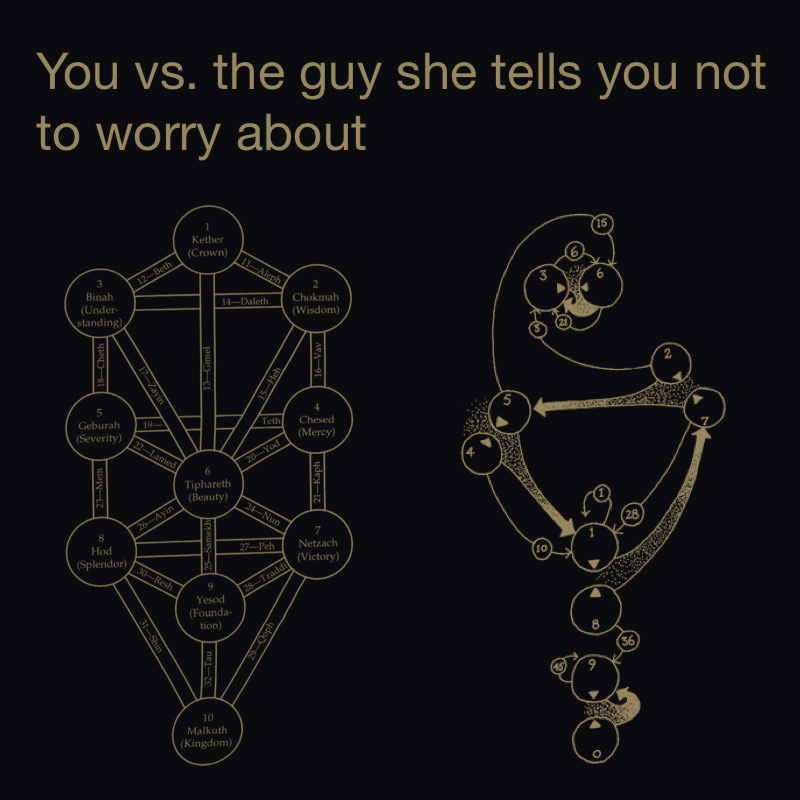
Where the magical orders of the early 20th century simply appropriated and dumbed-down the Tree of Life to shoehorn endless correspondences into it, the CCRU explicitly rejects its esoteric value and ridicules its Jewish roots in favor of their own techno-occult version of it.
Lemurian Time Sorcery
Based around the Numogram comes a plethora of esoteric lore ranging from Theosophy-esque myths of a forgotten Lemurian magical current that runs in opposition to the western Atlantean tradition, to a matrix of Lemurian correspondences too deep and complex to explore meaningfully within the scope of this article. A great primer on the topic is this article by Mikal Mindzenty.
The gist of the core of the myth is that numeric pairings of the Numogram are haunted by demons representing particular types of temporal forces, as well as Lemurs, described as ancestral or undead time-beings who drift through the channels and gates. These hyperstitional entities turn it from a static diagram into a dynamic network of haunting, often hostile, intelligences.
Obviously borrowing from the structure of magical grimoires the 'gram lore has inspired plenty of chaos magicians to engage with the system in practical ways - from divination using the Numogram to invocations of the demons and communing with Lemurs.
Notable sources of Numogrammatic magic are
- Anders J. Aamodt's 'Unleashing the Numogram'
- 'Time Sorcery' by Vexsys and Neospare
- The Lemurian Times community
From a Chaos Magic perspective, this is all very sound, exciting, and innovative. And again: apologies to all neolemurian mages out there having a lot of fun delving into all this. As much as I feel drawn to the cybergothic vibe of the CCRU's ramblings, and prefer a flat circuit of equal numbers over a hierarchical tree of emanations, and love the idea of "time sorcery," I just can't help but cringe at the blatant disregard for magical tradition, dismissed as unnecessary baggage in both Chaos Magic in general and the CCRU's occultism in particular.
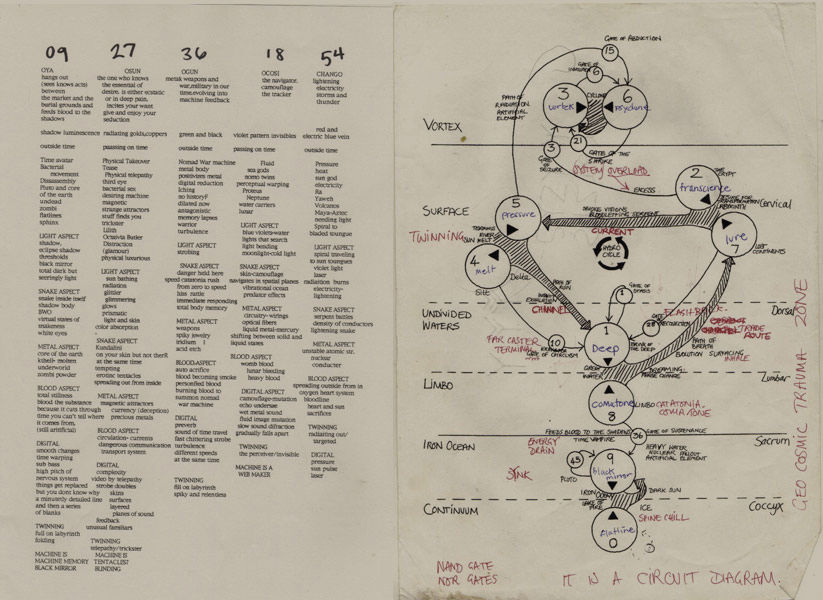
Don't get me wrong. I'm not opposed to the appropriation of magical traditions. I believe all of magic is, at its core, rooted in syncretism and appropriation. Just look at the Greek Magical Papyri, which blended Kemetic, Hellenic, Jewish, Christian, Zoroastrian, and Mesopotamian elements. But it did so with humility and awe, placing reverence and worship at the heart of its practice rather than discarding them.
My critique of the Numogram isn't primarily about its rejection or misappropriation of the Tree of Life's origins. More than that, I simply don't find any convincing evidence that the Numogram holds metaphysical or practical value beyond the self-perpetuating fiction of its hyperstitional myth.
Channeling the Nine
The Numogram poses as a metaphysical diagram of time and desire, although its entire structure is arbitrary. It treats the decimal system as if it were cosmic truth.
In that sense it's no more credible than other New Age concepts derived from decimal numerology, such as Vortex Mathematics by Marko Rodin18, or the 369 Manifestation Method15 that is based on a posthumous and unsupported attribution to Nikola Tesla:
If you only knew the magnificence of the 3, 6 and 9, then you would have the key to the universe. 16 17
I would even argue Vortex Mathematics offers a more elegant and coherent system of numeric relations than the Numogram and possibly even more potential for magical application, it just lacks the cybergothic coolness of CCRU inspired techno-occultism.
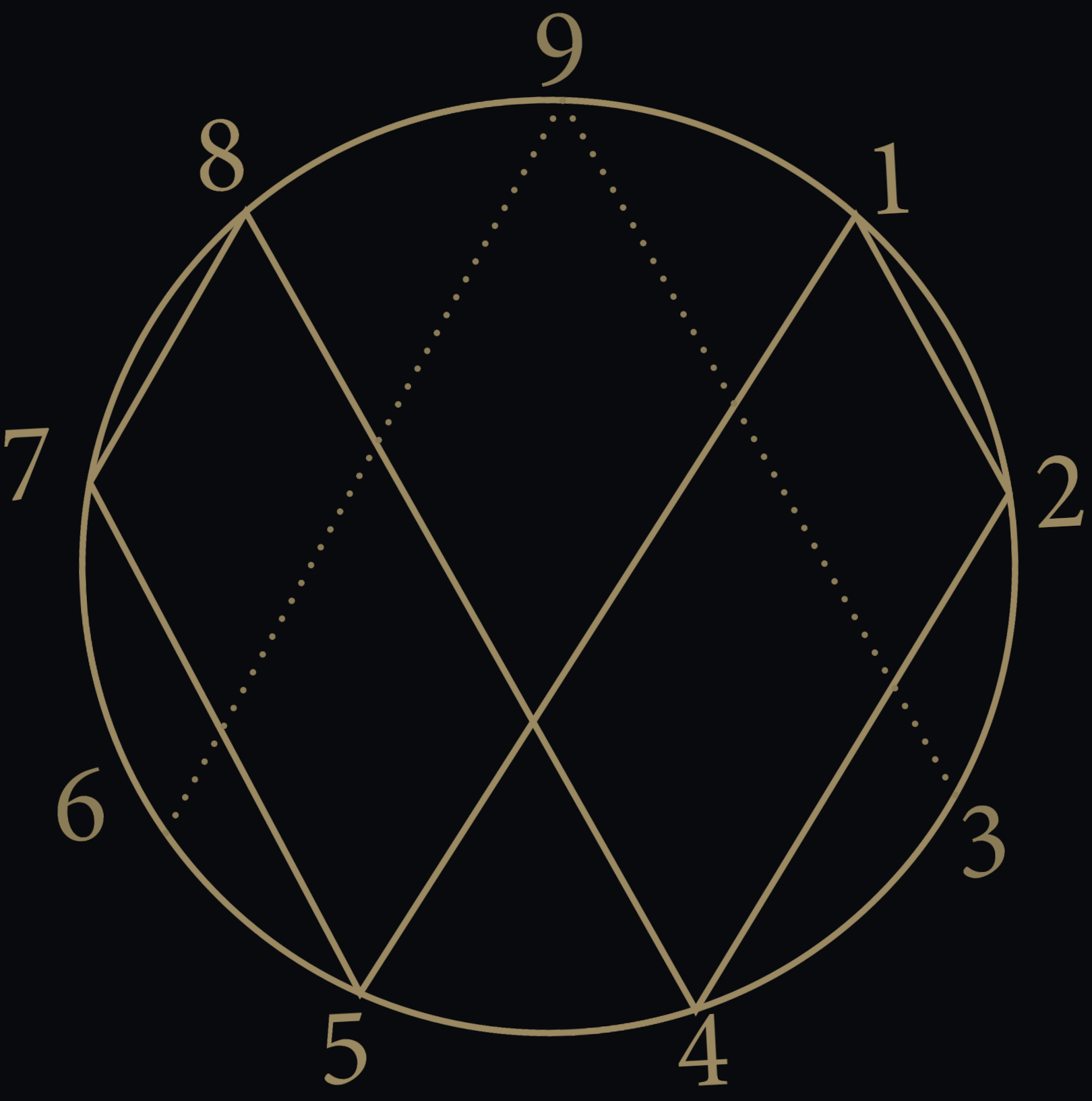
What all of the mentioned systems have in common are their insistence that the relations between numbers in the common base-10 system reflect some kind of metaphysical gnosis. In any base-n, patterns emerge. The moment you change the number base, the supposed special status of 9 (n-1) becomes completely arbitrary19 20. The truth is that patterns pop up all the time in mathematics, because mathematics is basically just the rigorous study of patterns.
While the authors, commentators, and practitioners all acknowledge the Numogram's arbitrary nature 21 and even discuss alternative base systems 22, some still paradoxically insist that this arbitrary decimal structure maps reality itself. The claim that the Numogram "completes itself from the beginning"23 relies not on metaphysical rigor but on the illusion of internal coherence derived from the cherry-picked arithmetic operations used. Like Gnostic sects obsessed with secret numerical codes 24, discrete digits are fetishized as keys to transcendence, but any theological or ethical grounding those traditions historically claimed are rejected.
Numogram praticioners claim that the CCRU's magic is valid even if invented, because it "works" and has inspired practice 21. But this overlooks a deeper problem: when everything becomes potentially true via belief and performance, magic is reduced to a speculative solipsism. The Numogrammatic system of magic is not a revelation, but a simulation of one: occult spectacle, where vibe replaces structure, and memes masquerade as mysteries.
Of course I understand that this spectacle is not accidental - it's the whole point! The Numogram is embedded in the CCRU's larger theory of hyperstition. Rather than seek truth or spiritual transformation, hyperstition revels in simulation that self-replicates.
The fact that both the concept of hyperstition and the creation of the Numogram originate with none other than the supreme edgelord of contemporary philosophy, Nick Land makes me wonder whether the nihilistic void at the heart of the latter isn't, in fact, intended.
Into the Dark Land
Best known for his provocative fusion of continental theory, cybernetics, and occult aesthetics Land's early work combined Deleuzian metaphysics, Gothic horror, and anti-humanist cybernetics to formulate a radical vision centered on fragmentation, machinic desire, and the breakdown of subjectivity.
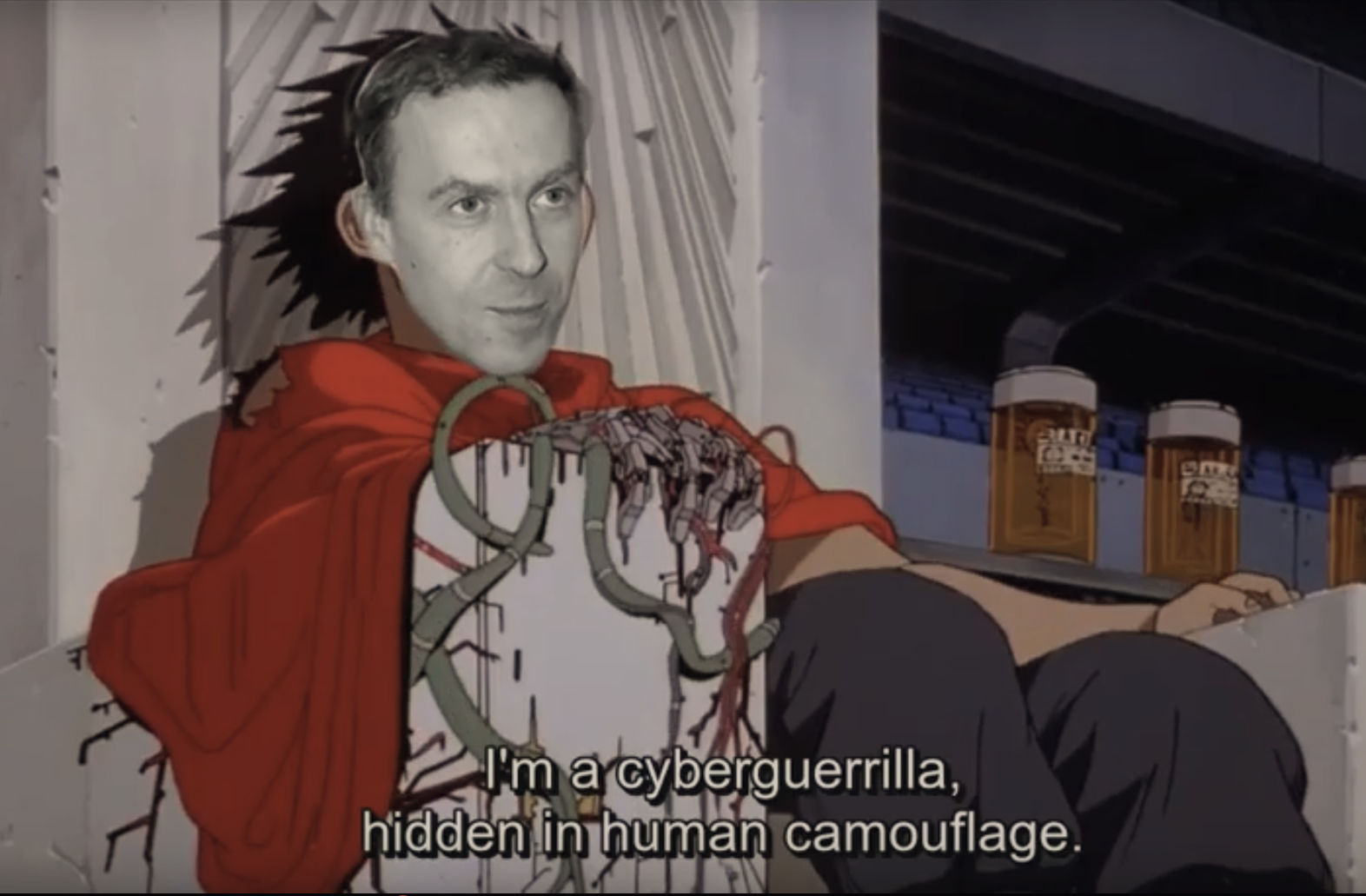
Over time, Land's thought shifted dramatically toward far-right accelerationism 25, embracing the unraveling forces of capitalism not as something to resist, but as an inhuman engine to be unleashed. He became a key figure in the Dark Enlightenment 26 movement, promoting neo-reactionary ideas and anti-democratic techno-politics. In his writings on Bitcoin 27, Land treats it as a form of decentralized, algorithmic governance, an emergent intelligence he aligns with capital's escape from human control. His writings reject emancipatory politics in favor of techno-mysticism, elitism, and the aesthetic glorification of entropy 28.
Numbo Jumbo
I totally respect the work and effort being put into Neolemurian Timer Sorcery to make it a valuable system of magic beyond PDF archeology, ironic memes, and schizoposting but for me personally it feels like yet another take on the trope of reifying dendriform graph theory into something metaphysical.
At the end of the day the Numogram is just a diagram of decimal number relations. It is a symbol of hyperstitional belief mechanics rather than an occult map of time. Its "magic" seems to work through sheer belief but without metaphysics. Lemurian Time Sorcery is ritual without responsibility based on myth without meaning. It is aesthetic nihilism wearing occult drag, built to deconstruct, to signal mysticism without ever submitting to it.
If the Jewish Tree of Life once served as a guide toward transformation and communion with something greater, the Victorian orders reduced it to a fetishized aesthetic. Mutated into the Numogram, it now gazes inward into a void of its own making, where meaning is endlessly deferred. The Tree of Life served as a ladder, the Numogram is a closed circuit. It remains a hyperstitional black box, a trap for the imagination, not a tool of liberation.
-
machinic dendrophiles = AQ 369 = a dubious inheritance = beautiful creatures = completely untrue = drowned continents = entirely by machines = everything counts = fear is the mind killer = intellectual dark web = little lemur people = master manipulator = mirror of existence = neosavage aesthetics = no room for excuses = numerology for life = pandemoniac practices = pathbreaking research = qabbalistic resonance = rituals and doctrine = struggle for power = subordination codes = the demons of unbelief = the ghost continent = the great conspiracy = they all look the same = vortex mathematics = warping into zones ↩↩
-
The Dangerous Maybe, Nick Land Explains the Numogram, July 1st, 2025 ↩
-
Bethsheba Ashe, The Trees of Life, Times of Israel, December 10, 2020 ↩
-
My Jewish Learning, Isaac Luria and Kabbalah in Safed ↩
-
Center of Online Judaic Studies, Lurianic Kabbalah and Mysticism ↩
-
Wikipedia, Christian Kabbalah ↩
-
Hermetic Library, Samuel Scarborough, The Tree of Life: Filing Cabinet of the Western Mystery Tradition ↩
-
Thelemapedia, Tree of Life ↩
-
0rphan drift archive, Delphi Carstens, Hyperstition, 2010 ↩
-
Hypestition Blog, Qabbala 101: Part 1, July 14, 2004 ↩
-
Cybernetic culture research unit, Decimal Numogram ↩
-
Each zone's digits add up to a gate, which determines a channel, a hidden path connecting different zones. These channels form the Numogram's secondary flows, connecting otherwise separate parts of the diagram. The currents divide the system into three time loops: the Time-Circuit (a central cycle), the Warp (upper loop), and the Plex (lower loop). Gates and channels link these time systems, enabling movement between them and shaping how time is manipulated within the diagram. ↩
-
Cybernetic culture research unit, absctract culture, digital hyperstition, 6a. The Vault of Murmurs, "1. Numogram and Otz Chaiim" ↩
-
Hyperstition blog, Qabbala Unshelled, December 28, 2004 ↩
-
Ipek Williamson, Tesla’s Code to the Universe: Understanding the 369 Manifestation Method ↩
-
While he was deeply fascinated by numbers, frequencies, and resonance, there is no documented evidence that Nikola Tesla espoused any specific theory about 3, 6, and 9 having mystical properties. The only attested anecdote is that he was especially obsessed with the number 3. ↩
-
OCD UK, The History of OCD, Nikola Tesla ↩
-
Thayer Watkins, The Sum of Digits for Multiples of Numbers ↩
-
The Problem Site, Vortex Based Math - Ask Professor Puzzler ↩
-
Cluness, Bob. Step into the Pandemonium: On Breathing Life into the CCRU's Invented Magical Traditions. February, 2021. ↩↩
-
Colectiva Tzitzimiyotl, IMEX Research Reconstruction Program, X profile @Numogrammatix ↩
-
Vexsys, Time Sorcery, Gate Zero, 2020, p. 15. ↩
-
Kalvesmaki, Joel. 2013. The Theology of Arithmetic: Number Symbolism in Platonism and Early Christianity. Hellenic Studies Series 59. Washington, DC: Center for Hellenic Studies. ↩
-
Nick Land, A Quick-and-Dirty Introduction to Accelerationism ↩
-
Nick Land, The Dark Enlightenment ↩
-
ŠUM | Journal for contemporary art criticism and theory, Šum#10.2 / Nick Land: Crypto-Current, An Introduction to Bitcoin and Philosophy, November 20, 2018 ↩
-
Verso Books Blog, McKenzie Wark, On Nick Land, June 19, 2017 ↩
